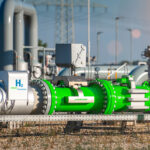
Lisa Stiffler of GeekWire reports on a biodegradable plastics startup.

- Vancouver-based Bioform Technologies, a startup making biodegradable plastics from wood pulp, has raised up to $5 million from Brazil’s Suzano Ventures, the investment arm of a major pulp manufacturer.
- Bioform’s bioplastic product can replace single-use plastics made from fossil fuels, generating 80% less carbon dioxide emissions, and can be recycled as paper or composted after use.
- The startup, which aims to begin commercial production by 2027, is leveraging technology developed by University of British Columbia professors to produce sustainable alternatives to single-use plastics at competitive costs.
“The startup analyzed its climate impacts and found its product generates 80% less carbon dioxide compared to traditional plastic at commercial scale. The manufacturing process can use existing pulp mill machinery to make rolls of plastic.”
Read the full article here.









